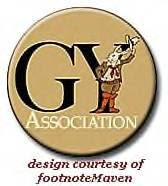Brig General William Barksdale ( left)
Just before 4 o'clock on July 2, 1863, Confederate artillery along this portion of Seminary Ridge opened fire on the Union batteries stationed in the Peach Orchard. Huddling in the woods, the Mississippi troops listened to the boom of the guns and screech of Union shells crashing through the trees above them. Impatient that his part of the attack was delayed until other troops had gone in first, a fuming Barksdale stormed up and down, stopping only to petition his division commander for permission to go into the attack early.
Almost two hours into the attack, the hot tempered general was given permission to move forward in support of Confederate troops advancing on their right. Barksdale ordered his men to the eastern edge of the woods where the Mississippians dressed their ranks and went to the position of "parade rest" while Union shells burst around them. Though considered a senior in age, General Barksdale was a fiery and fearless leader in battle whose face appeared to "glow with excitement at the prospect of battle." Dressed in a resplendent gray officer's coat highlighted with gold trim, his long gray hair flowing almost to the collar, Barksdale spurred his black charger to the front of his old regiment, the 13th Mississippi. Above the noise of battle, the general spoke a few words of encouragement. He then waved his hat as a signal to begin the charge and his brigade moved forward in an unstoppable wave.
The Mississippi Brigade raced across open fields and sliced through the Union line. It was "The most magnificent charge of the war," as one eyewitness called it. Despite the heroic efforts of two Union regiments near the Sherfy House to slow the Mississippians, Barksdale's soldiers broke through the shaken Union defenders in the Peach Orchard and the Union line began to collapse. Wofford's Georgians followed in Barksdale's path and eventually drove in the last defenders of the orchard before they reached the Wheatfield and beyond.
Barksdale’s Mississippians lost nearly half of their number in the horrific fight on the afternoon of July 2, in the Peach Orchard on the Emmitsburg Road, and en route to Cemetery Ridge. Among them was Barksdale himself, one of 32 generals who fell at Gettysburg.
The Mississippi State Monument stands near this location, selected for this site because of the service of General Barksdale's Mississippi Brigade on July 2.
Sculptor Donald Harcourt DeLue, born October 5, 1897 in Boston, Massachusetts, and died on August 26, 1988 in Leonardo, New Jersey sculpted the monument. He was 76 years old when he completed the Mississippi State Monument. The monument was dedicated on October 19, 1973 and cost $100,000.
The monument to the State of Mississippi at Gettysburg is southwest of town on West Confederate Avenue.
It stands where General Barksdale's Mississippi Brigade began their charge into the Peach Orchard on July 2nd and represents the hand-to-hand fighting of that desperate day. The color-bearer has fallen mortally wounded and his comrade steps over his body, using his clubbed musket to defend the fallen flag.
One of the most conspicuous soldiers on the battlefield is the color bearer. Those who carried the regimental flag into the fight could not carry a weapon, as both hands were required to raise the flag and keep it aloft for the rest of the unit to follow. As a result, the enemies fired at the color bearer more than any other soldier, because if the flag fell, those following it could not continue their charge. On the opposite side, those attacking could not allow the flag to fall. Therefore, as one color bearer was shot down, another, and another would grasp the standard and carry it onward.
Mississippi
July 1st 2nd 3rd 1863
On this ground our brave sires fought for their righteous cause;
In glory they sleep who give to it their lives
To valor, they gave new dimensions of courage
To duty its noblest fulfillment
To posterity, the sacred heritage of honor.
Mississippi was represented on the fields of Gettysburg by infantry brigades of Davis of Heth's division, Hill's corps, consisting of the Second, Eleventh, and Forty-second Mississippi regiments ad the Fifty-fifth North Carolina regiment, which was temporarily assigned to it; Barksdale's brigade of McLaw's division, Longstreet's corps, consisting of the Thirteenth, Seventeenth, Eighteenth and Twenty-first regiments; Posey's brigade of Anderson's division, Hill's corps, consisting of the Twelfth, Sixteenth, Nineteenth, and Twenty-first regiments; Ward's Mississippi battery (the Madison Light Artillery) of Poague's battalion, which was attached to Pender's division.
In addition to these infantry-artillery forces from Mississippi, the Adams County troop of cavalry, the Chickasaw Rangers, and the Kemper County cavalry of Hampton's brigade, Stuart's division, also took part in the battle of Gettysburg.
In addition to these infantry-artillery forces from Mississippi, the Adams County troop of cavalry, the Chickasaw Rangers, and the Kemper County cavalry of Hampton's brigade, Stuart's division, also took part in the battle of Gettysburg.
Mississippi had eleven infantry regiments, one infantry battalion, one cavalry regiment, and one artillery battery , sending over 4,900 men to Gettysburg, with almost 1,500 becoming casualties.
Confederate Monument listing all the
participating Confederate States (top left)
I visited Gettysburg in September 2010 with my fiance Tony. I walked alone out into the wide open pasture which was once the Wheat Field. I felt the thick dark energy that permiated the air, crushing my chest with its heavy weight. The silence screamed at me and I could almost hear the hot breath of wild eyed horses and charging foot soldiers all around me. I did not feel alone in the least.
It was hard to breathe and I felt an overwhelming sense of sadness no matter what area of the battlefield I was walking on. I walked the trails near Spangler's Spring, I stood on Cemetery ridge, where smoke and gunfire once sliced the air.
I hiked the scenic paths up Little Round Top. I sat behind the rock barricades where the 20th Maine held the Union flanks and where Confederate troops bravely stormed the rocky slopes only to fall to their deaths, Sliced down by the blazing guns that rained down upon them. I heard the trees crying as if they had human voices. I walked across Slaughter Pen and sat amongst the boulders of Devil's Den, two of the saddest areas I visited. I stood on Confederate Avenue near Pitzer Woods, where the Mississipians charged so fiercely. The sadness I felt while at Gettysburg was overwhelming and I cannot begin to imagine the horrific scenes of death, pain and bloodshed that occured on both sides of the line, in this most beautiful of countrysides. In my opinion there were no real winners of this bloody battle. Both sides of the conflict experienced enormous losses of life.
Many different estimates exist on the number of casualties inflicted during the battle of Gettysburg, but one common estimate is as follows:
* Total Confederate casualties have been estimated to be as great as 28,000. It is usually agreed that total Confederate casualties numbered at least 1/3 of Lee's army.
It is hard to imagine that a conflict so bloody could have happened on such beautiful ground. The feelings of death, pain, anger, sadness and loneliness still lingers in this place.
Many different estimates exist on the number of casualties inflicted during the battle of Gettysburg, but one common estimate is as follows:
Union -Killed 3,155 Wounded 14,530 Missing 5,365 Total 23,040 % of Total 27%
Confederate Killed 2,600-4,500 Wounded 12,800 Missing 5,250 Total 20,650-25,000*
% of Total 30%-34%
* Total Confederate casualties have been estimated to be as great as 28,000. It is usually agreed that total Confederate casualties numbered at least 1/3 of Lee's army.
It is hard to imagine that a conflict so bloody could have happened on such beautiful ground. The feelings of death, pain, anger, sadness and loneliness still lingers in this place.
I firmly believe that the spirits of those who bled and died here, remain to this day. I do not need photographic evidence or scientific proof of their ghostly existence. I felt them with my bones and I heard them all around me, screaming with each gust of wind.
View More of My Gettysburg Photos Here :
History Sources:
Mississippi Monument Photograph © 2008 Patricia A. Hickman
http://militaryhistory.about.com/od/civilwar/ig/Gettysburg-Confederate-State/Mississippi.htm
http://www.nps.gov/archive/gett/getttour/tstops/tstd2-07.htm
http://www.thegettysburgexperience.com/past_issue_headlines/2010/april2010/battlefieldart.html
http://www.gettysburg.stonesentinels.com/Confederate/MS.php
http://msgw.org/desoto/military/gettysburg.html
http://www.militaryhistoryonline.com/gettysburg/getty4.aspx

















Greetings from rain soaked Southern California.
ReplyDeleteI added myself to follow your blog. You are more than welcome to visit mine and become a follower if you want to :-)
May God bless you and your family in 2011 ~Ron
And always remember: Smiles don't have to be saved for a rainy day. It's good to waste them :-)
I'll try and remember that. :) Thank you for adding me and I will certainly check out your blog. Stay dry! Angela
ReplyDeleteHello, just happened across your site, and it looks fascinating! Thought you might enjoy the stunning photo of the Mississippi monument at Gettysburg that is the cover photo for the new battlefield audio tour, The Gettysburg Story (based on the works of historian Gabor Boritt). I'm including a link here to photo on The Gettysburg Story's Facebook page in case you haven't seen it: https://www.facebook.com/LoyaltyOfDogsDotCom?ref=hl#!/photo.php?fbid=371042776248987&set=a.371040756249189.91230.141840502502550&type=1&theater
ReplyDelete